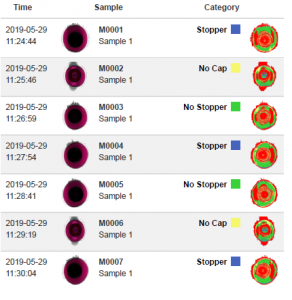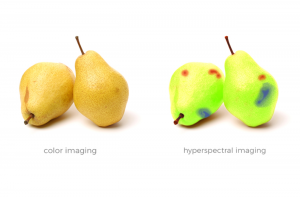CAPPA has recently added a new hyperspectral imaging system, the HySpex SWIR – 384, to its current service offering. With the addition of this system, CAPPA will now be able to offer an extensive range of services to help with their customers growing needs. The addition of the HySpex has expanded the capabilities at CAPPA enabling them to carry out more detailed research across a variety of different sectors such as pharmaceutical, medical device, photonics, food and beverage, as well as with companies in new sectors. The equipment will provide a modernized offering to their current industry partners with increased sensitivity and flexibility. The equipment will allow CAPPA to retain their current industry partners as well as grow larger projects with these current and new partners.

Hyperspectral imaging improves vision and discrimination power by using spectral signature information of surface materials, and it is one of the most promising techniques currently investigated for quality evaluation purposes. The main advantage of the hyperspectral imaging system is its ability to incorporate both spectroscopy and imaging information, not only to make direct assessments of different components simultaneously, but also to locate the spatial distribution of such components in the tested products. As the hyperspectral imaging technique is a non- destructive tool it has been used more and more in food applications.
The system incorporates a spectral camera (HySpex SWIR – 384) with several lenses on a translation stage, combined with a focused broadband illumination source. The camera has a state of the art MCT sensor with cooling down to 150K which yields low background noise, high dynamic range and exceptional signal noise (SNR) levels, making it ideal for a wide range of applications. With several lenses available it it possible to image large objects (ca. 30 cm wide) and macroscopic samples with a spatial resolution of ca. 50 microns. Near Infra-Red (NIR) light is often superior in comparison to visible as it can penetrate much deeper, enabling it to show more detailed images, for example bruising under the skin of an apple.

Some of the applications the HySpex can be used for is remote sensing, machine vision, optical sorting, medical imaging, life science applications, spectroscopy instrumentation, automotive and transport, trace detection, biotechnology, precision agriculture, industrial monitoring, wood process, sorting and security. The HySpex also has many applications in the food and beverage sector. CAPPA will be able to offer more food authentication and analysis across this sector but specifically in the areas of meat, fruit and vegetables, dairy products, grains, powders and seaweed. Such examples includes analyzing the percentage of fat or water content in food products, identifying defects, characterizing product quality and locating contaminants.
You can contact CAPPA today to learn more about the HySpex and how it can be used for your business.



